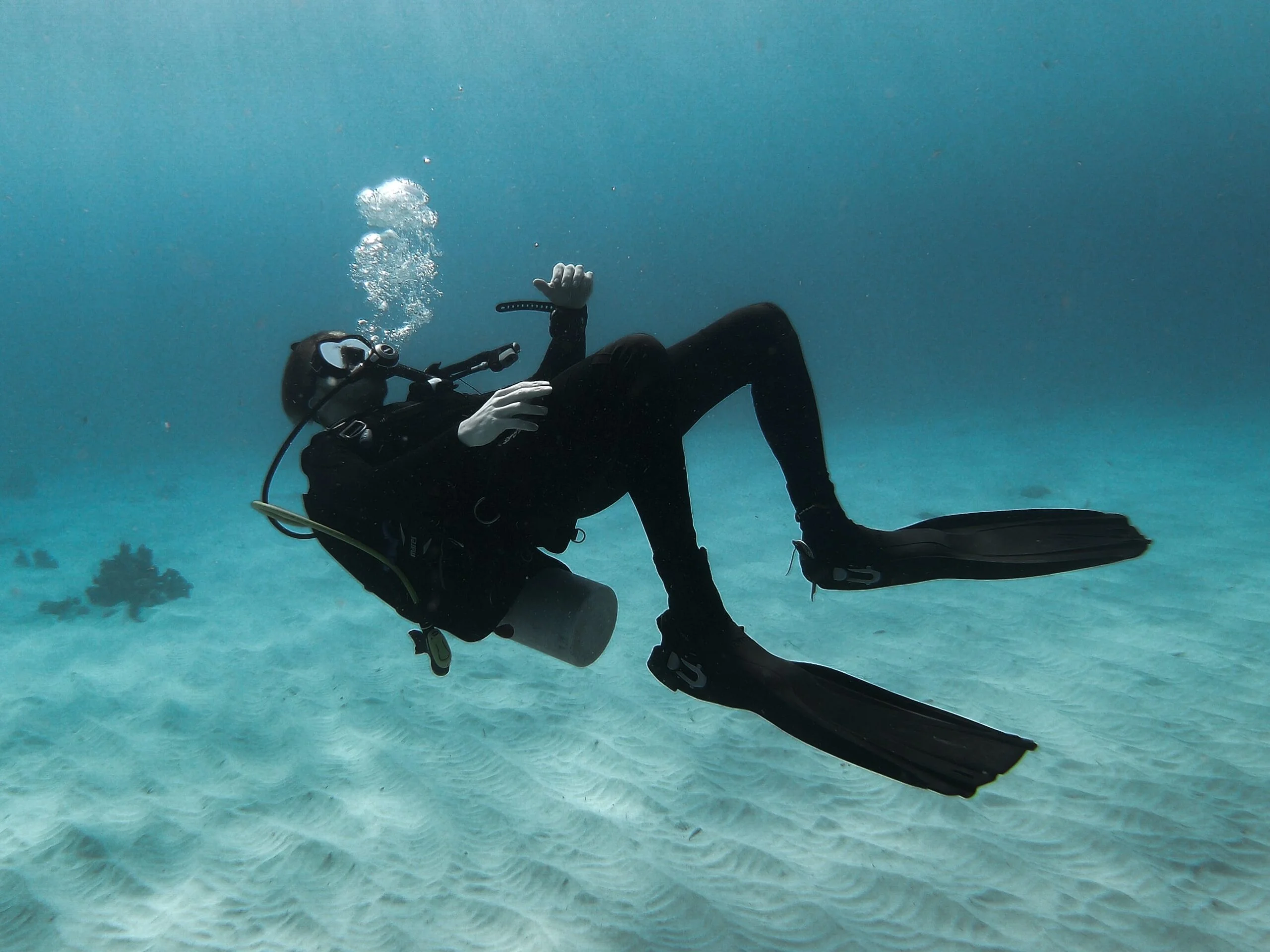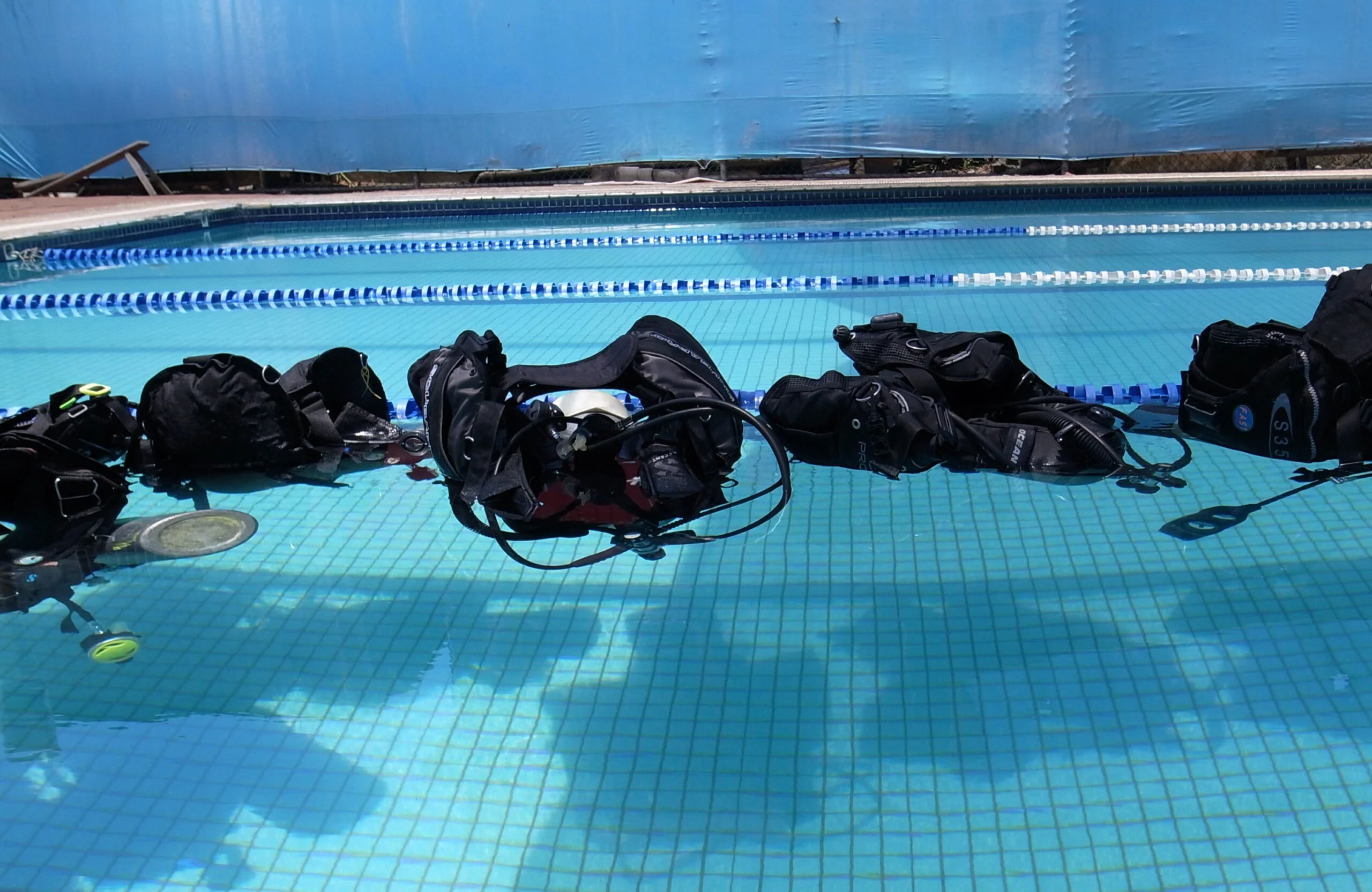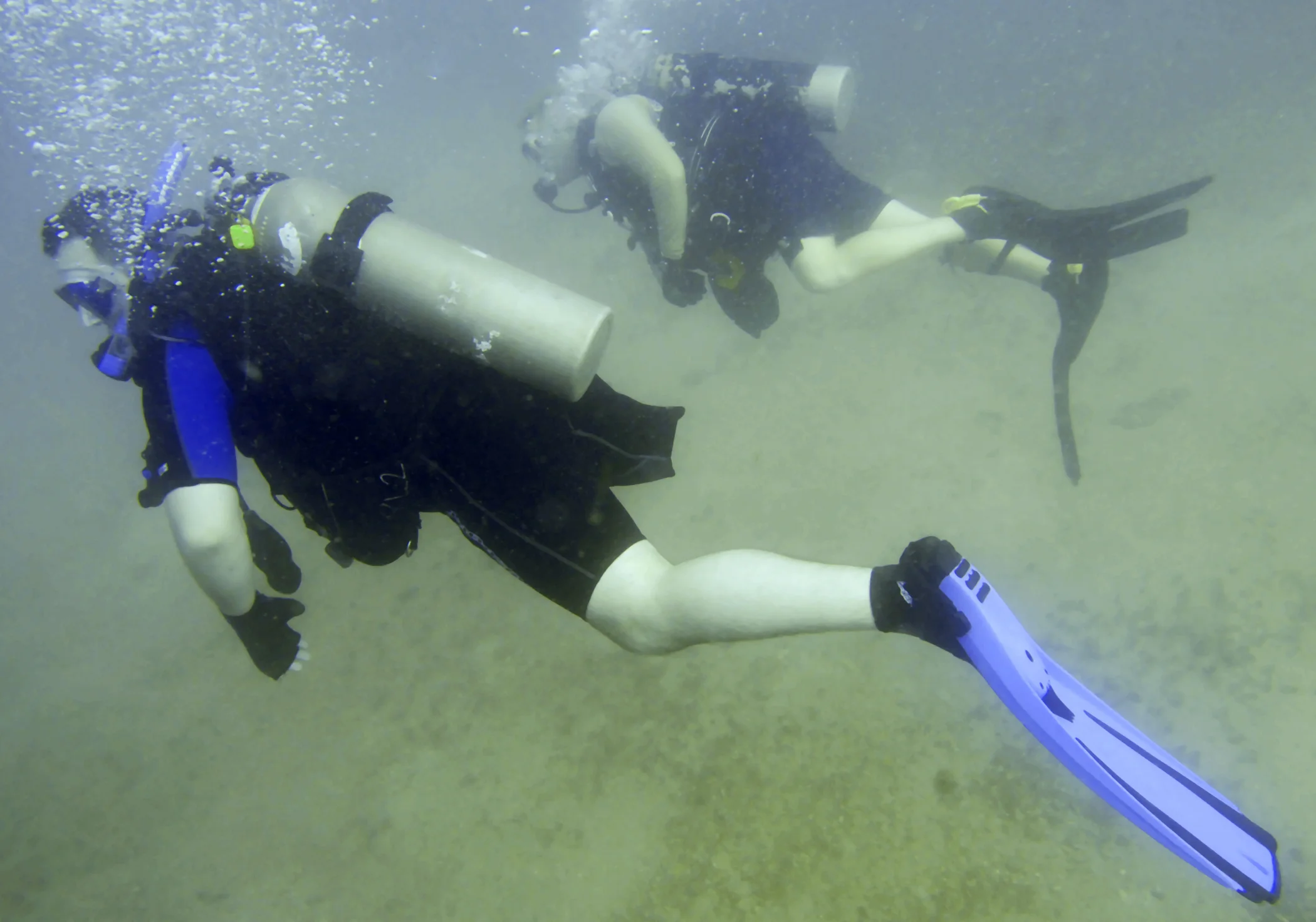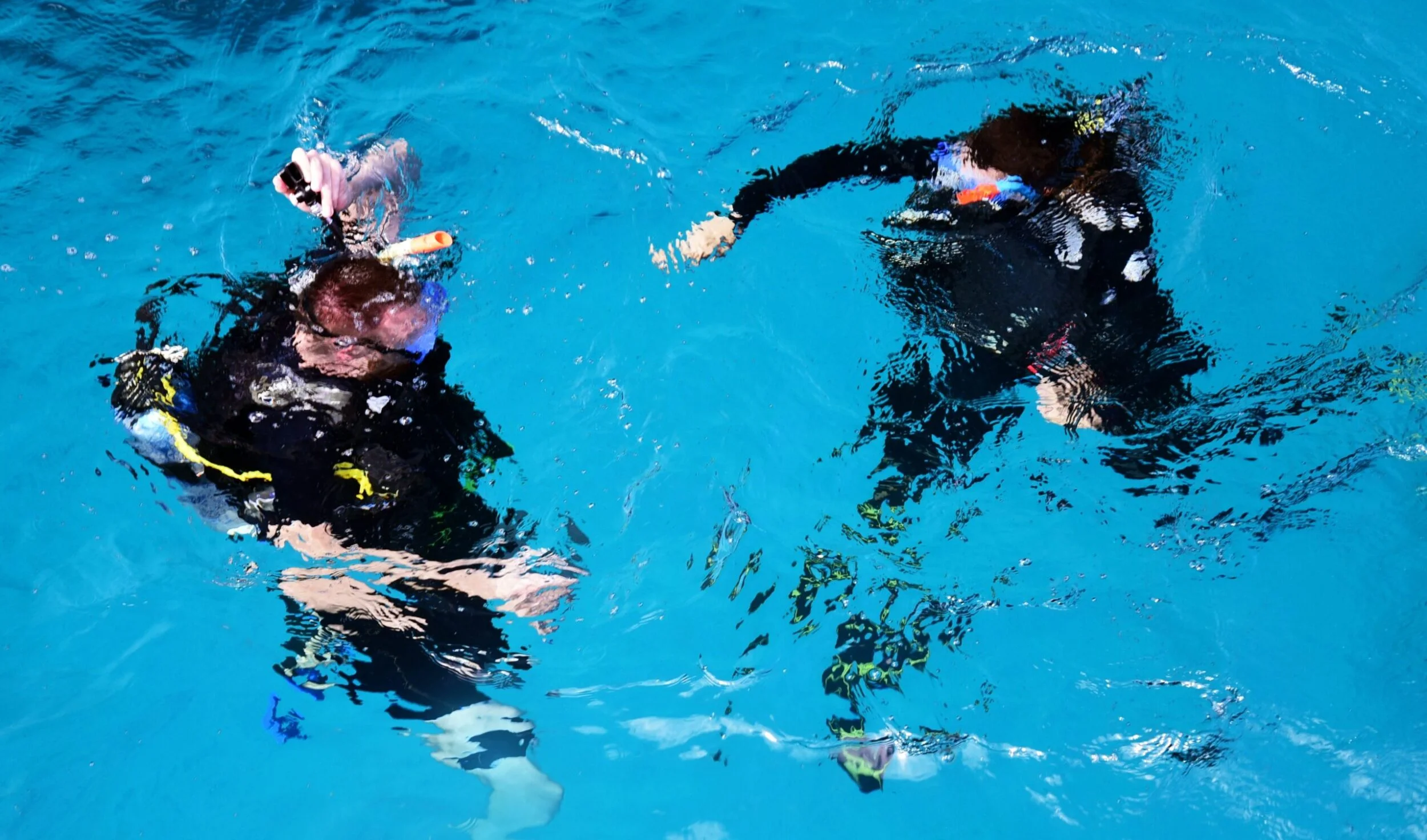Cenote Diving: Unleash Your Inner Explorer
Welcome to the mesmerizing realm of cenote diving in Mexico! Prepare to embark on an extraordinary journey through the hidden treasures of cenotes – their profound significance, formation, distinctive attributes, and the awe-inspiring diving encounters they offer. Get ready to unveil the captivating underwater kingdom that awaits you in Mexico’s cenotes.
Disclaimer: Cave and cavern diving, such as scuba diving in cenotes, demands specialized training and exceeds the boundaries of recreational diving. We strongly advise visitors to obtain appropriate certification and training before attempting these dives. It is crucial for divers to always operate within their training and comfort levels. Stay safe and dive responsibly.
Discovering the Hidden Gems: What are Cenotes?
Cenotes, deriving from the Mayan term “dzonot,” are natural sinkholes predominantly found in Mexico’s Yucatan Peninsula. These magnificent formations are a result of the collapse of limestone bedrock, revealing a world of crystal-clear freshwater pools intricately connected by an underground labyrinth of rivers.

The Definition and Significance of Cenotes
Cenotes hold immense cultural and historical importance to the Mayan civilization. Revered by the Mayans as sacred portals to the underworld and a source of life-sustaining water. Today, these stunning natural wonders attract divers, snorkelers, and nature enthusiasts worldwide.
Types of Cenotes Found in Mexico
Mexico boasts a diverse array of cenotes, each showcasing its own unique characteristics. Open cenotes feature exposed water surfaces, while cave cenotes are nestled underground within expansive cave systems. Semi-open cenotes offer a captivating fusion of natural light and shadow, with partially enclosed surfaces that create an enchanting atmosphere.
Forming a Natural Wonder: The Birth of Cenotes
Understanding the geological process behind cenote formation adds to their allure and mystique. Let’s delve into the fascinating story of how these enchanting sinkholes came to be.
Unraveling the Geological Process
The existence of cenotes owes itself to the exceptional geological composition of the Yucatan Peninsula. Primarily composed of porous limestone, the region has witnessed the erosion and dissolution of limestone over thousands of years, sculpting an intricate network of underground rivers and caverns. Eventually, the ceilings of these caves collapsed, giving birth to the breathtaking cenotes we marvel at today.
The Role of Underground Rivers and the Yucatan Peninsula
Beneath the surface of the Yucatan Peninsula lies an extensive system of subterranean rivers. Rainwater, permeating through the porous limestone, finds its way into these hidden channels. These rivers flow beneath the land, shaping the landscape and creating the awe-inspiring cenotes that dot the region.
Submerging into Wonder: Exploring the Underwater Realm of Cenote Diving
Prepare to be captivated as we dive into the mesmerizing underwater realm of cenotes. Discover the pristine waters, spectacular cave systems, and unique features that make cenote diving an extraordinary adventure.
Mesmerizing Waters and Spectacular Cave Systems
As you descend into the crystalline waters of a cenote, you enter a world of unparalleled beauty. The visibility is often astonishing, allowing you to witness the intricate rock formations, stalactites, and stalagmites adorn these submerged caves. The purity of the water creates an otherworldly experience as if you are floating weightlessly in a hidden oasis.
Unique Features: Rock Formations and Light Effects
One of the most enchanting aspects of cenote diving is the mesmerizing rock formations and the interplay of light and shadow. Sunlight streaming through the openings above cast ethereal rays, illuminating the underwater world in a kaleidoscope of colors. The stalactites and stalagmites, formed over thousands of years, add an extra touch of wonder to the already breathtaking scenery.
Safety Measures and Accessibilities: Cenote Diving Precautions
While cenote diving offers an exhilarating experience, it’s crucial to prioritize safety and take necessary precautions. Here, we address the safety concerns and guidelines for divers of all experience levels, ensuring a secure and enjoyable cenote diving adventure.
Addressing Safety Concerns
When exploring the mesmerizing world of cenotes, being aware of potential risks and implementing necessary safety measures is paramount. Underwater navigation, equipment entanglement, and buoyancy control are common concerns that require attention. Furthermore, divers must carefully manage their air supply and adhere to dive time limits to avoid decompression sickness, a potentially dangerous condition.
Guidelines for Divers and the Role of Experienced Guides
For a safe and fulfilling cenote diving experience, diving with a certified and experienced guide is recommended. These experts possess extensive knowledge of each cenote’s unique characteristics and potential hazards. They can provide guidance on navigating the underwater cave systems, ensuring your safety while enhancing your overall diving experience.
Accessibility for Divers of Varying Experience Levels
Cenotes offer opportunities for divers of different experience levels, from beginners to advanced divers. There are cenotes suitable for introductory dives, where novices can experience the wonders of cenote diving under the guidance of professionals. For experienced divers seeking a more thrilling and technically demanding adventure, challenging cave systems await, promising an unforgettable exploration.
Unveiling the Splendors: Cenotes in Popular Mexican Destinations
Mexico is blessed with numerous cenotes spread across its stunning landscapes. Let’s explore some of the must-visit cenotes in popular Mexican destinations, each offering a unique and unforgettable diving experience.
Cenote Dos Ojos – Tulum
Located near the charming town of Tulum, Cenote Dos Ojos is renowned for its intricate cave system and mesmerizing underwater passages. Divers can witness breathtaking stalactites and stalagmites, swim through narrow tunnels, and be captivated by the crystal-clear water’s stunning clarity.

Gran Cenote – Tulum
A true paradise for divers and snorkelers, Gran Cenote enthralls with its pristine turquoise waters, diverse marine life, and fascinating rock formations. The immersive and awe-inspiring diving experience is complemented by the vibrant underwater world that snorkelers can enjoy from the surface.
Cenote Taj Mahal – Tulum
Cenote Taj Mahal stands out for its unique beauty and tranquility. Its crystalline waters and incredible visibility provide a serene and captivating diving experience. The cenote’s remarkable limestone formations and peaceful atmosphere make it a must-visit destination.
Cenote Angelita – Tulum

Divers’ dreams come true in Cenote Angelita, renowned for its surreal and captivating underwater landscape. The distinct feature of this cenote is a cloud-like layer of hydrogen sulfide that separates the freshwater above from the saltwater below, creating an otherworldly effect. As divers descend into the depths, they witness a submerged “river” and the haunting remnants of tree branches.
Cenote Calavera – Tulum
Cenote Calavera, also known as the Skull Cenote, offers a unique diving experience with its interconnected sinkholes. Navigating through narrow passageways, divers explore the depths and admire the stalactites above. The cenote’s name stems from the skull-like shape formed by the sinkholes’ openings, adding an intriguing element to the adventure.
Cenote Azul – Playa del Carmen
Located in close proximity to Playa del Carmen, Cenote Azul is an exuberant and picturesque cenote that combines the allure of mesmerizing turquoise waters with a profusion of underwater life. Snorkelers and divers can revel in the presence of tropical fish, turtles, and even the occasional manatee.
Cenote Chac Mool – Playa del Carmen

Cenote Chac Mool stands as a favored option for divers seeking an immersive and all-encompassing experience. This cenote showcases an expansive underwater cave system with intricate passages and awe-inspiring rock formations. Divers have the opportunity to explore the concealed corners of the cenote, uncovering hidden chambers adorned with stalactites and stalagmites.
Cenote Cristalino – Playa del Carmen
Remaining true to its name, Cenote Cristalino offers waters of unparalleled clarity, providing excellent visibility for divers. They can marvel at the vibrant underwater world teeming with colorful fish and captivating geological formations. The cenote’s tranquil ambiance further enhances the diving experience’s enchantment.

Cenote Carwash – Playa del Carmen

Once a popular spot for locals to wash their cars, Cenote Carwash now attracts divers with its unique beauty. This open cenote features a mix of freshwater and saltwater, creating an intriguing environment where divers can encounter a variety of marine life, including tarpon and stingrays.
Cenote El Pit – Playa del Carmen

Cenote El Pit is a hidden gem for diving enthusiasts. This deep cenote offers excellent visibility and a mesmerizing display of sunlight penetrating the water’s surface. Divers can descend into the depths and witness the impressive rock formations that line the walls of the cenote.
Cenote Chikin Ha – Playa del Carmen
Cenote Chikin Ha offers a multitude of experiences for both divers and non-divers alike. Snorkelers can explore the cenote’s shallow areas, marveling at the colorful fish and submerged tree roots. Certified divers, on the other hand, can delve into the deeper sections, including underwater caves and passages.
Cenote Chaak Tun – Playa del Carmen
Cenote Chaak Tun is a hidden oasis surrounded by lush vegetation. Divers can venture into the cenote’s underground cave system, marveling at the stunning stalactites and stalagmites that decorate the chambers. Guided tours are available to ensure a safe and informative exploration.
Cenote Aktun Ha – Cozumel
Located on the island of Cozumel, Cenote Aktun Ha offers a captivating diving experience. Divers can descend into the cenote’s clear waters, discovering submerged caverns and limestone formations. The cenote’s serene ambiance and diverse marine life make it popular among diving enthusiasts.
Cenote Colombia – Cozumel
Cenote Colombia is a hidden gem nestled in the jungles of Cozumel. Its azure waters and fascinating geological features offer a surreal diving experience. Divers can navigate through the caverns, encountering colorful marine life and stunning rock formations.
Cenote Punta Sur – Cozumel
Cenote Punta Sur is an underwater paradise located at the southern tip of Cozumel. This cenote presents a unique blend of freshwater and saltwater, creating a diverse ecosystem. Divers can explore the cenote’s vibrant coral formations, swim alongside tropical fish, and witness the beauty of this natural wonder.
Cenote Santa Rosa – Cozumel
Cenote Santa Rosa is renowned for its impressive underwater cave system and unique geological formations. Divers can venture into the cenote’s depths, navigating through intricate passageways and encountering fascinating marine life. The cenote’s captivating beauty makes it a favorite among underwater photographers.
Wildlife Wonders: The Marine Life of Cenotes
Cenotes are not only captivating for their geological features but also for the diverse life they host. Let’s explore the incredible array of fish species and aquatic creatures that call cenotes their home.
Diversity of Fish Species and Aquatic Creatures
When diving in cenotes, you can encounter mesmerizing creatures that have adapted to the dark and secluded environment, making them truly unique.
One such captivating creature is the remipede, a small, blind crustacean with a long and segmented body. What sets them apart is their remarkable hunting behavior. Despite their lack of vision, remipedes exhibit fascinating predatory tactics in the dark and secluded cenote environment. They rely on their heightened senses and agility to capture their prey.
Another intriguing resident of cenotes is the blue crab. These crustaceans boast vibrant blue coloration and distinctive shape, adding a delightful visual element to your dive. Tucans, also known as American eels, are long, snake-like fish with exceptional swimming abilities and are renowned for their migratory behaviour. Cenote shrimps, on the other hand, are small, translucent crustaceans that play a vital role in the food chain, serving as a source of nourishment for larger predators.
The sailfin molly adds a splash of beauty to the underwater landscape with its vibrant colors and distinctive fin. Cenote molly showcases intricate social dynamics and behaviors. They engage in elaborate courtship rituals, where males perform captivating displays to attract females. Additionally, they exhibit fascinating maternal care, with the female molly fiercely protecting her offspring and ensuring their survival in the challenging cenote ecosystem.
These are just a few examples of the rich marine life you can encounter in cenotes. Each dive presents the opportunity to witness these remarkable creatures in their natural habitat, adding extra excitement to your underwater adventure.
It is vital to bear in mind that cenotes are delicate ecosystems, and practicing responsible diving is essential to preserve their natural beauty and safeguard the marine life within. Always adhere to experienced guides and diving operators’ guidelines to ensure a safe and respectful interaction with the cenote environment.
Addressing Common Questions about Sharks, Alligators, and Snakes
One concern frequently voiced by divers is the presence of sharks in cenotes. The majority of cenotes are situated far inland and disconnected from the open ocean, rendering them unsuitable habitats for sharks. The primary marine life in cenotes comprises smaller fish species and other aquatic creatures mentioned earlier.
Another concern pertains to the presence of alligators or crocodiles in cenotes. While it is true that Mexico is home to certain crocodile species, they are typically found in coastal areas or specific habitats, not in cenotes. Cenotes are freshwater environments, and crocodiles prefer brackish or saltwater habitats. Therefore, the chances of encountering crocodiles in cenotes are highly unlikely and should not be a cause for concern.
Similarly, snakes pose no significant threat in cenotes. While some non-venomous snake species may inhabit the surrounding jungle areas, divers rarely encounter them. Snakes generally avoid human contact and prefer to stay away from underwater environments.
Beyond Diving: Cenotes for Non-Divers
Cenotes offer more than just diving opportunities. They also provide a range of activities for non-divers, allowing everyone to experience the beauty and wonder of these natural formations.
Snorkelling and Swimming in Cenotes
Snorkeling in cenotes is a popular alternative to diving, providing a chance to explore the shallow areas and witness the incredible underwater scenery. Snorkelers can glide along the surface, observing the colorful fish and submerged formations beneath them. Many cenotes offer snorkeling equipment rentals and guided tours, ensuring a safe and enjoyable experience for all.
For those who prefer a leisurely swim, cenotes provide a refreshing escape from the heat of the Mexican sun. The clear, cool waters are perfect for a relaxing dip, surrounded by the natural beauty of the cenote environment.
Cave Exploration Adventures
Cenotes are not only captivating below the surface but also above. Many cenotes are nestled within intricate cave systems, offering opportunities for cave exploration adventures. Guided tours are available for adventurers to delve into the mysterious depths of these underground caverns, where they can witness unique rock formations, stalactites, and stalagmites. Cave exploration tours are carefully conducted with experienced guides, ensuring safety and a memorable experience.
Cultural Significance and Historical Exploration
In addition to their natural beauty, cenotes hold cultural and historical significance for the Mayan civilization. Cenotes were considered sacred by the ancient Mayans, who believed they were portals to the underworld. Exploring cenotes allows visitors to connect with the rich history of the region and appreciate the importance of these natural wonders in Mayan culture. Some cenotes even have archaeological artifacts or remnants of ancient rituals, adding an extra layer of intrigue to the experience.
FAQ: Answering Common Questions about Cenote Diving
Q: Are cenotes suitable for beginner divers?
A: Some cenotes can be suitable for beginner divers, while others are more challenging and require advanced diving skills. It’s important for beginner divers to receive proper training and certification before attempting cenote diving. Additionally, diving with an experienced guide is highly recommended to ensure safety and navigate the unique features of each cenote.
Q: What safety precautions should divers take when diving in cenotes?
A: Safety should always be a top priority when diving in cenotes. Here are some important safety precautions to follow:
- Dive with a certified guide: Experienced guides are familiar with the cenote systems and can provide valuable guidance during the dive.
- Maintain proper buoyancy control: Cenotes often have delicate rock formations and sensitive ecosystems. Divers should practice good buoyancy control to avoid accidental damage.
- Follow the buddy system: Diving with a buddy is crucial for safety. Always stay close to your dive partner and maintain clear communication throughout the dive.
- Use appropriate equipment: Ensure that your dive equipment is in good condition and suitable for cenote diving.
- Plan your dive and dive your plan: Before entering the water, discuss the dive plan with your guide and adhere to it during the dive. Stay within your comfort zone and avoid pushing your limits.
- Respect the environment: Cenotes are fragile ecosystems. Avoid touching or disturbing the formations, and be mindful of the aquatic life. Take only pictures and leave only bubbles.
Q: Can I dive in cenotes if I have never dived before?
A: Cenotes are not recommended for first-time divers. It’s important to have prior scuba diving experience and certification before attempting cenote diving. Familiarity with diving skills, buoyancy control, and underwater navigation is essential for a safe and enjoyable dive in cenotes.
Q: How can I choose the right cenote for diving?
A: With numerous cenotes to choose from, selecting the right one for diving can be overwhelming. Consider factors such as your diving experience, certification level, and comfort level in enclosed spaces. It’s also important to research the specific cenote’s diving conditions, accessibility, and reviews from other divers. Consulting with a local dive center or experienced divers can provide valuable insights and recommendations.
Conclusion
Cenote diving in Mexico offers a unique and awe-inspiring underwater experience. From the stunning rock formations and crystal-clear waters to the diverse marine life, cenotes captivate divers with their natural beauty.
Remember to prioritize safety, follow the guidance of experienced guides, and respect the delicate environment of the cenotes. Always dive within your training and comfort levels and obtain proper certification. Whether you choose to dive, snorkel, or simply swim in the cenotes, you’ll be immersed in a world of wonder and discovery. So pack your gear, prepare for an unforgettable journey, and dive into the enchanting depths of cenotes in Mexico.
Disclosure: This post may contain affiliate links, which means that DIVEMONDO may receive a small commission if you make a purchase using these links. As an Amazon Associate this website earn from qualifying purchases.











Leave a Reply